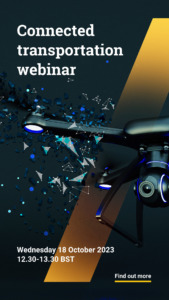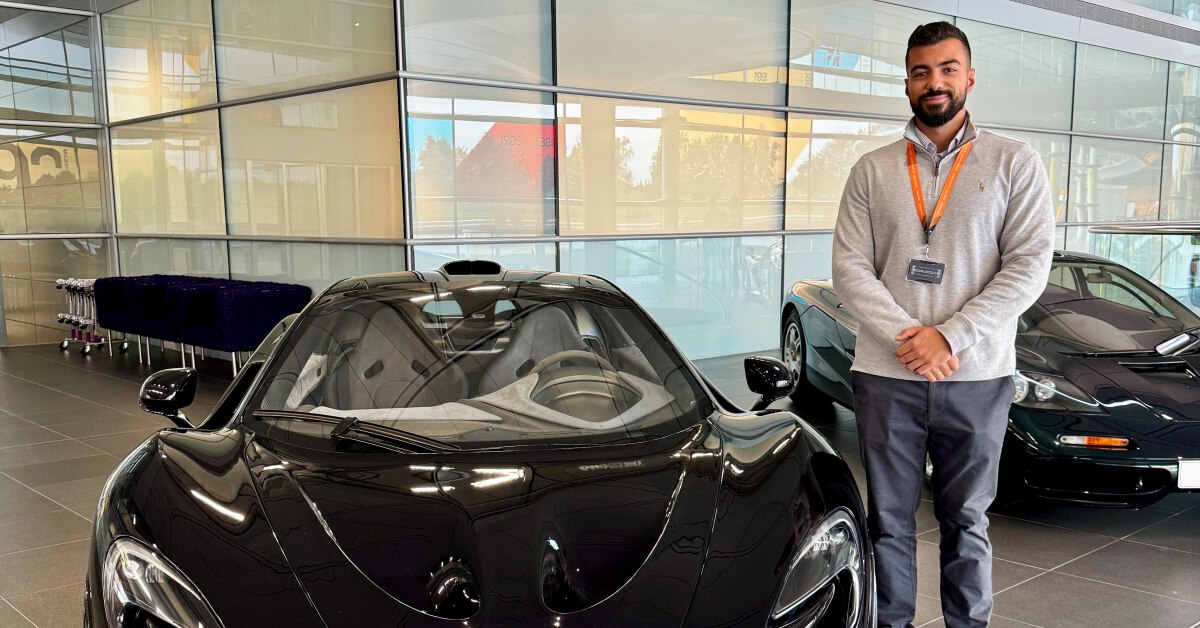Flying taxis and urban infrastructure: what is the future of advanced air mobility?
11/09/2023
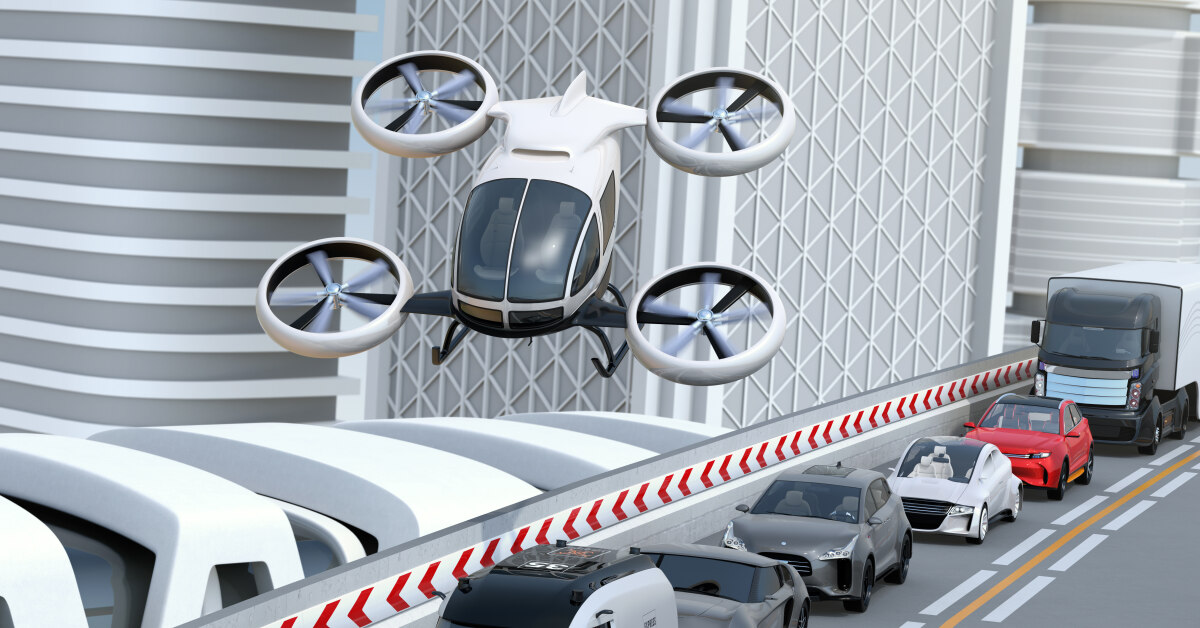
Advanced air mobility (AAM) is a concept that is set to revolutionise the way both people and goods travel. Exciting and innovative technologies are paving the way for new aircraft, such as flying taxis, that will transform the aerospace industry.
Here, detailing the research laid out in her co-authored article in the Drones journal, Professor Saba Al-Rubaye, Professor of Telecommunications and Autonomous Systems at Cranfield University, discusses how we can overcome complex challenges to successfully integrate these automated and autonomous technologies into our urban infrastructure in a safe and sustainable way.
Integrating advanced air mobility aircraft into existing airspace operations
Successfully integrating advanced air mobility (AAM) operations into the airspace system will be dependent on creating a safe, efficient, and reliable system, with minimal impact on existing airspace operations. It is expected that the earliest urban air mobility (UAM) operations will be for demonstration purposes and will be required to comply with current airspace rules and regulations.
To be authorised and fly safely, UAM electric vertical take-off and landing (eVTOL) aircraft with on-board pilots (commonly referred to as ‘flying taxis’) need to be equipped with appropriate technologies, making them capable of seamless communication with both air traffic management (ATM) and unmanned aircraft system traffic management (UTM) systems.
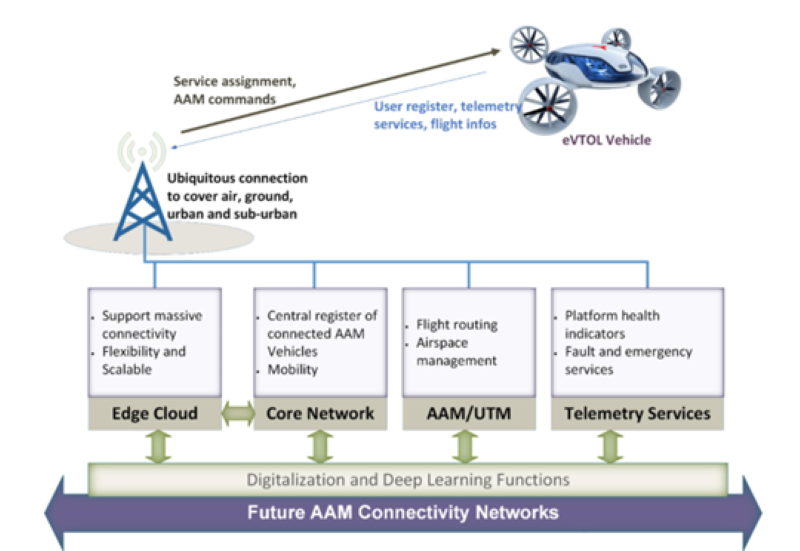
In response to these challenges, industry pioneers are actively engaged in the development of cutting-edge communication technologies, with a primary focus on fifth generation (5G) networks and future sixth generation (6G) networks, to enable air mobility and satellite-based communication systems, specifically tailored to support the intricate demands of AAM operations.
Drawing upon distinct functionalities and performance metrics, the advanced communication infrastructure can be systematically categorised into several essential components. These encompass the edge cloud, constituting the outermost layer of the network, the core network that forms the heart of communication systems, the AAM-UTM (advanced air mobility – unmanned traffic management) sector dedicated to facilitating coordinated and safe air traffic, and telemetry services geared towards precise data transmission and reception (see figure 1).
A pivotal necessity within the air mobility communication network is the attainment of low latency, signifying the imperative for swift and efficient data transmission. This attribute assumes paramount significance for autonomous vehicles, which hinge on real-time data for prompt decision-making. Additionally, the network must exhibit the capacity to accommodate a substantial multitude of devices, encompassing sensors and various other types of apparatus indispensable for bolstering the operational framework of air mobility vehicles.
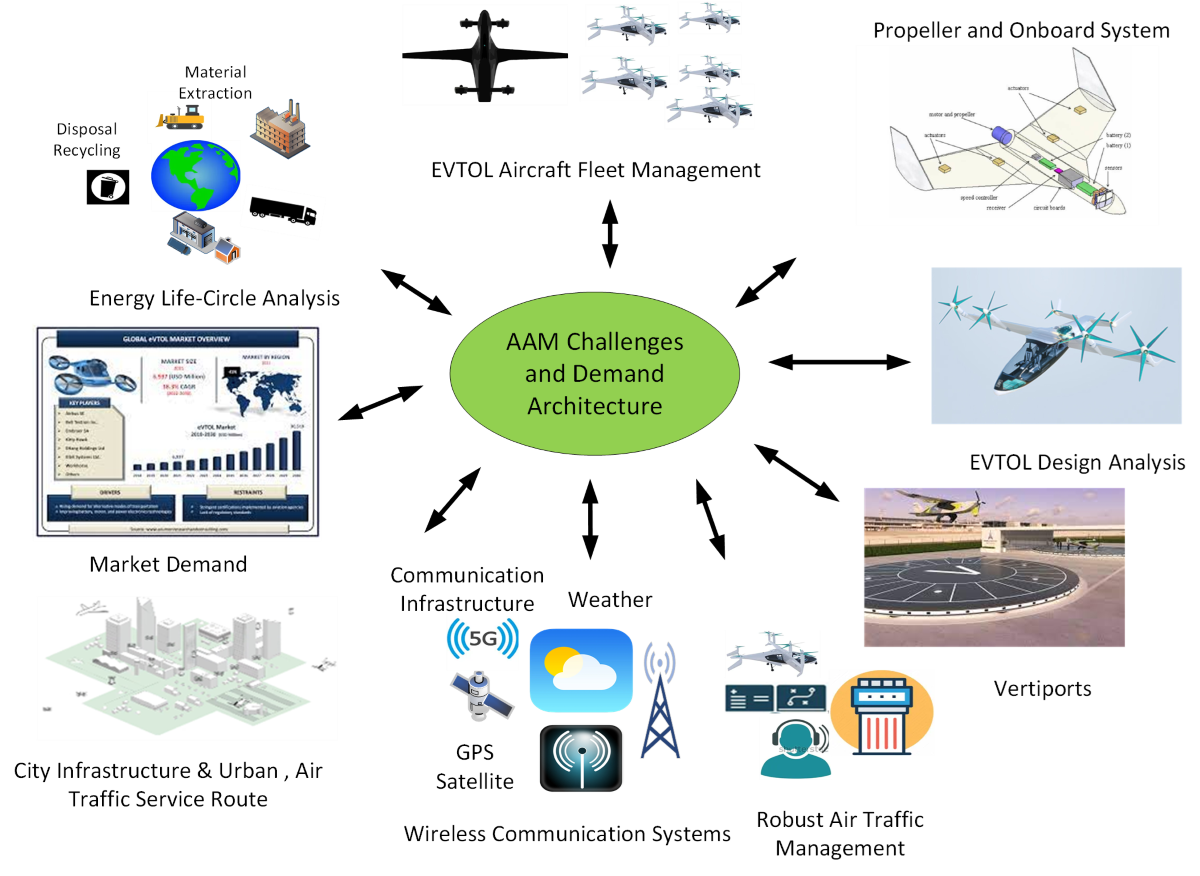
The key challenges posed by advanced air mobility operations
In light of these requisites, this work undertakes the task of unveiling novel challenges within the domain of air mobility. It simultaneously introduces frameworks rooted in aerospace integration, designed to seamlessly dovetail with both existing and forthcoming infrastructural elements, rather than embarking on a complete reconstruction of the foundational digital architecture. This approach underscores a pragmatic stance, fostering convergence among diverse economic sectors and simultaneously mitigating technical complexities.
This methodology stands to expedite the assimilation of assorted novel air vehicles into an already elaborate communications environment. Moreover, it lays the groundwork for establishing robust safety mechanisms, aptly aligned with evolving standards, thereby fortifying the security fabric of the ecosystem. The AAM service will consist of several demands for autonomous systems (delivery AAM vehicles, flying taxis, etc.) that can be remotely commanded to perform assigned missions. Requesting a certain service from AAM architecture will be enabled via a centralised system that offers such services and identifies them to local providers (see figure 2).
The proposed communication system ecosystem necessitates the seamless integration of diverse components, including air traffic management systems, ground control infrastructure, and communication networks. Such integration is pivotal in enabling seamless and effective communication channels between AAM vehicles and ground-based systems, thereby ensuring the integrity and efficiency of operations.
Consequently, the aviation industry is actively pioneering an advanced aerospace framework, promoting shared practices that prioritize the safety, sustainability, and efficiency of aerial operations. This framework holistically addresses the impending challenges of future flight and puts forth a comprehensive proposal for the integration of operational protocols, infrastructural components, connectivity solutions, and overarching ecosystems that will define the future of air mobility.
These solutions are to address the expansion of large-scale AAM deployments that encounter obstacles stemming from inadequate wireless coverage in bustling metropolitan areas and underserved rural communities. Particularly in the initial recovery phase, the incorporation of AAM alongside new air-to-ground connectivity introduces complex challenges. These include potential strain on terrestrial networks due to data requests, the need to uphold link reliability, and effective management of handover events between different communication points.
To conclude, this paper aims to pave an innovative pathway for the future of air mobility operations and services. By introducing a visionary blueprint for the backbone infrastructure, underpinned by advanced communication technologies, this work seeks to establish a foundation that supports aviation’s safety and sustainability in the years to come.
Are you interested in finding out more about this area of research? Professor Saba will be leading a panel discussion in our Connected Transportation webinar on Wednesday 18 October 2023 at 12.30pm BST.
Categories & Tags:
Leave a comment on this post:
You might also like…
Preparing your work for Turnitin submission
Before submitting your work into Turnitin for similarity checking, if you have used referencing software then you may need to take some important steps first. Mendeley and Zotero integrate with MS Word by embedding field ...
The fast track to supercar engineering: My Cranfield journey
It’s been a dream come true to work on some of the world’s most prestigious supercars – the Aston Martin Valhalla, McLaren 750 & Artura, the GMA T.33. But every successful ...
Automotive Engineering: From student to hypercar innovation at Rimac
We sat down with recent graduate Thomas Perrin, to discuss how his year on the MSc in Automotive Engineering at Cranfield University propelled him from the lecture hall directly into the ...
What this year at Cranfield really meant to me
Every Cranfield journey is unique. In this alumni reflection, Zachea Scicluna shares what her year at Cranfield truly meant, from facing uncertainty to gaining hands-on experience in industry-backed projects. I’ve been reflecting (and delaying) ...
Preparing for assignments and exams?
Sorry! We know it seems a bit mean to mention the exams in January rather than looking forward to the break before it! However, we know many of you will be thinking about your forthcoming ...
Screening for FTSE 100 companies on Bloomberg
So you’re researching an index and need some data on its constituent companies? Bloomberg’s Equity Screening tool makes light work of this, not just for the FTSE, but for indices, exchanges and sectors worldwide. Type EQS ...

